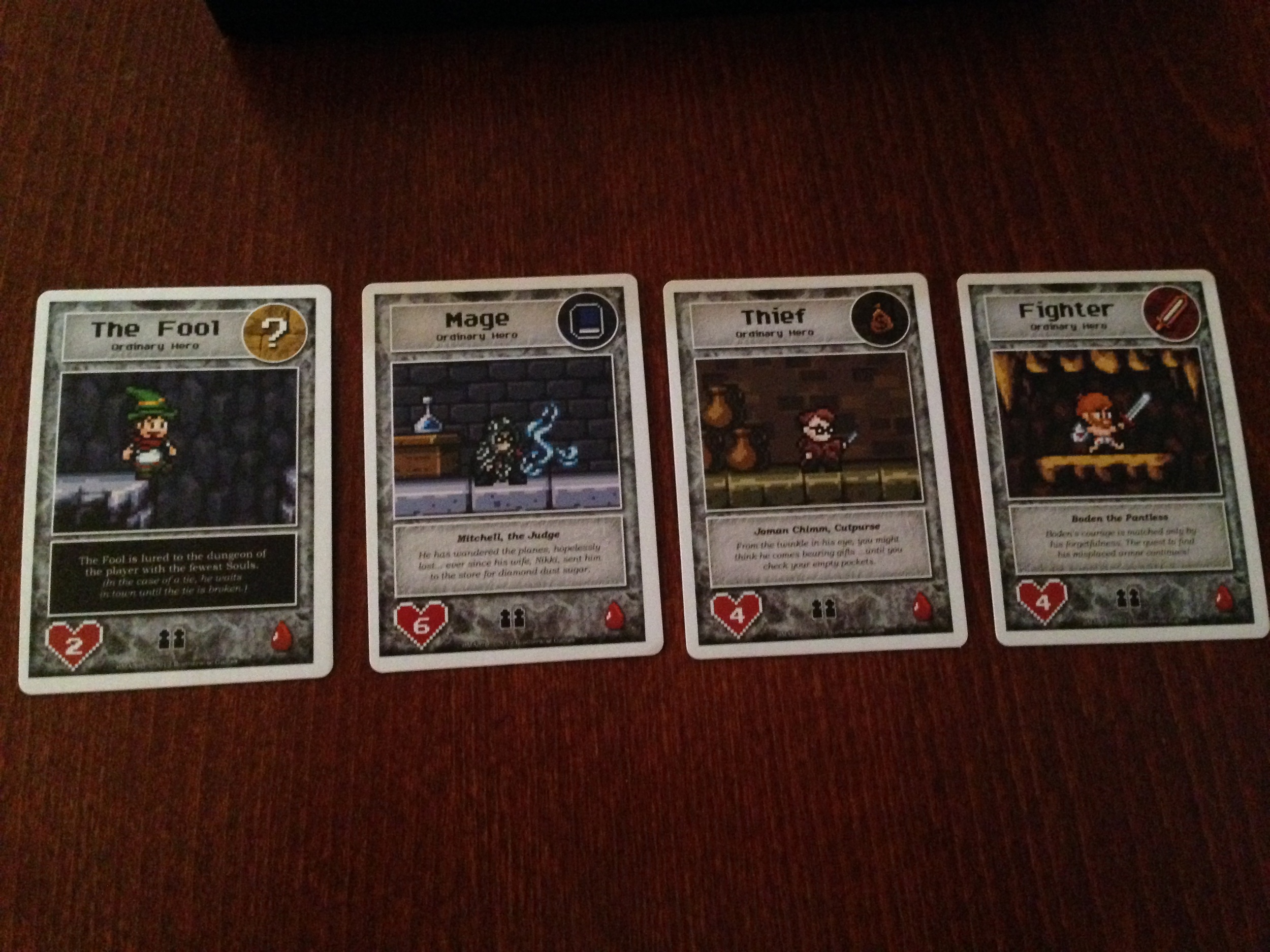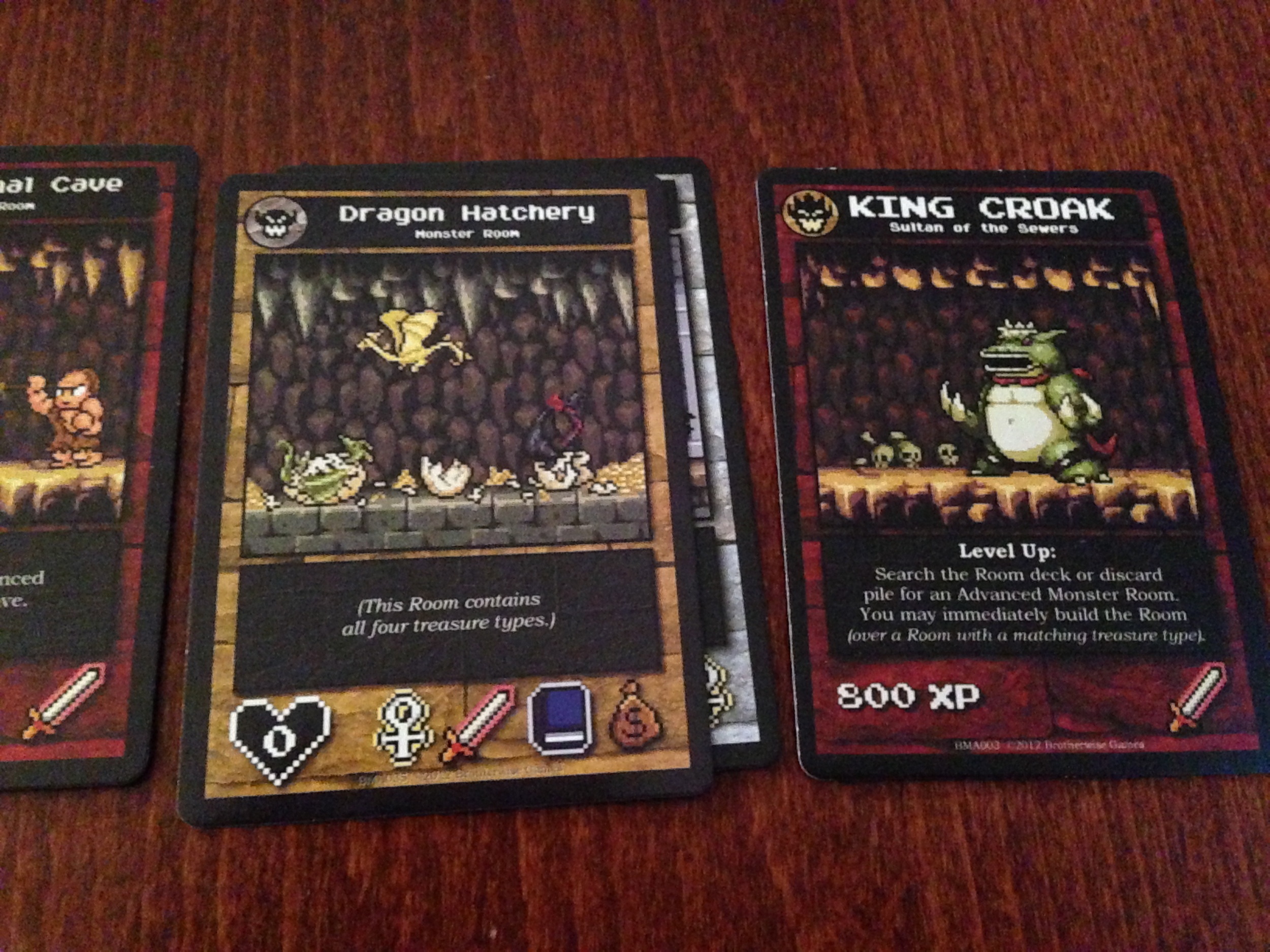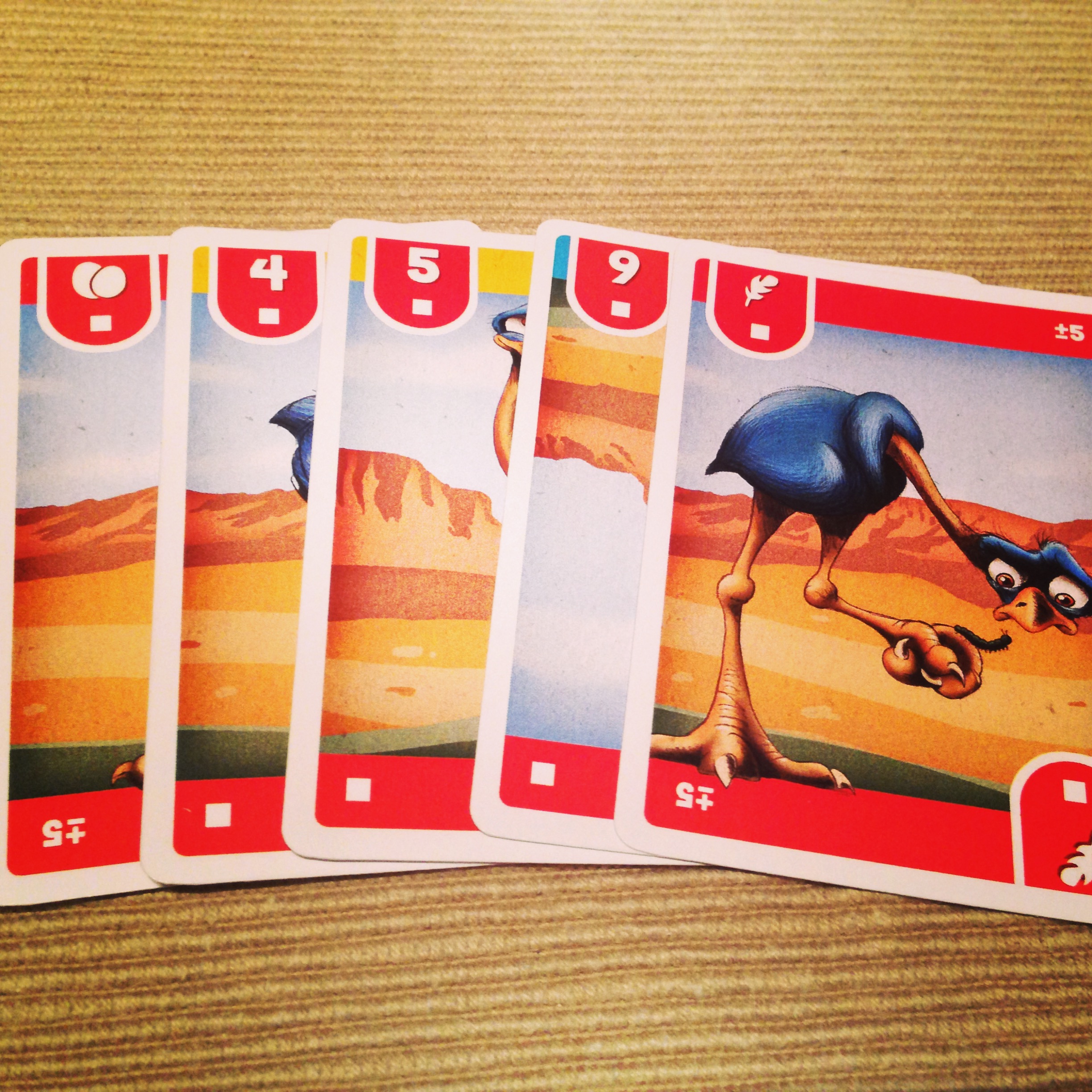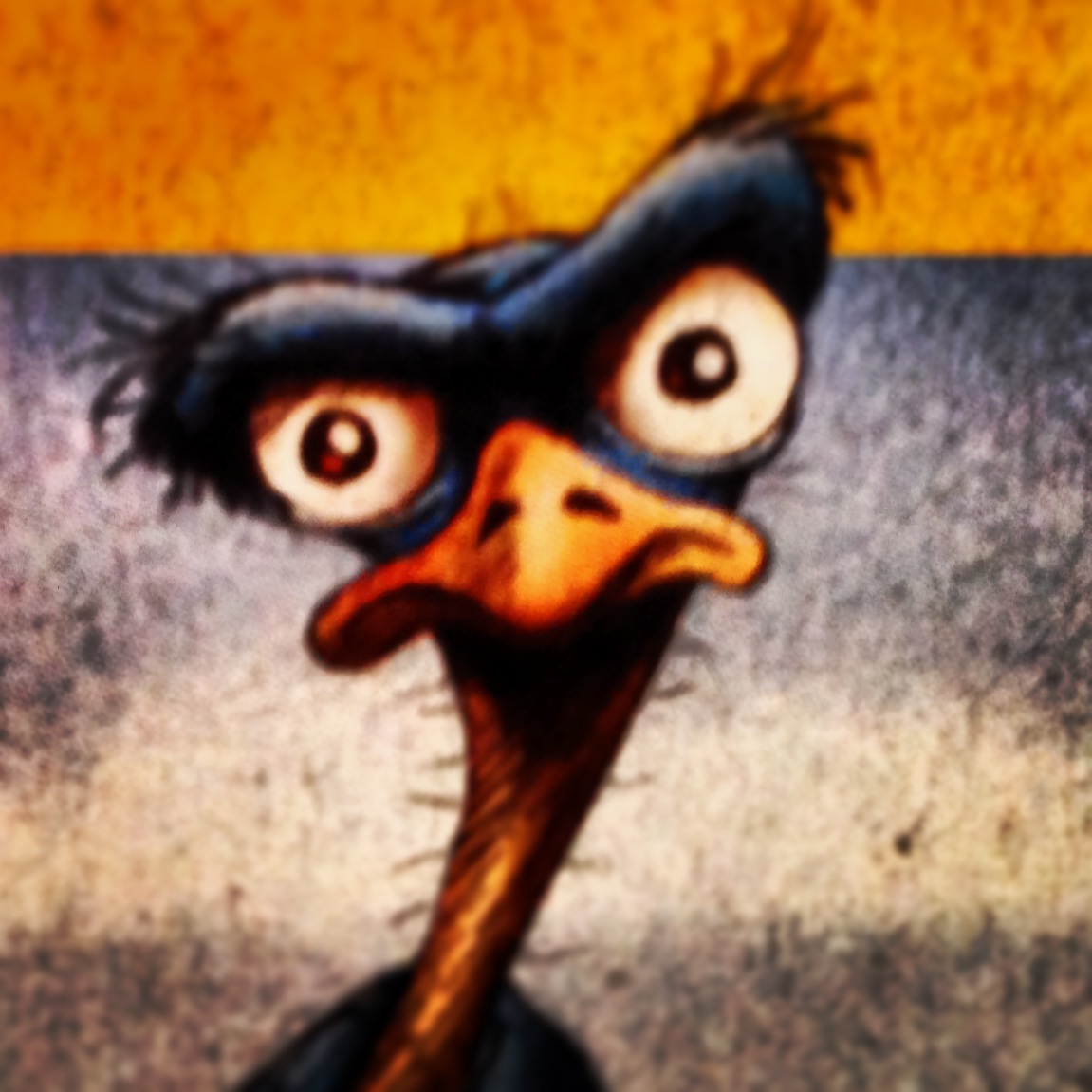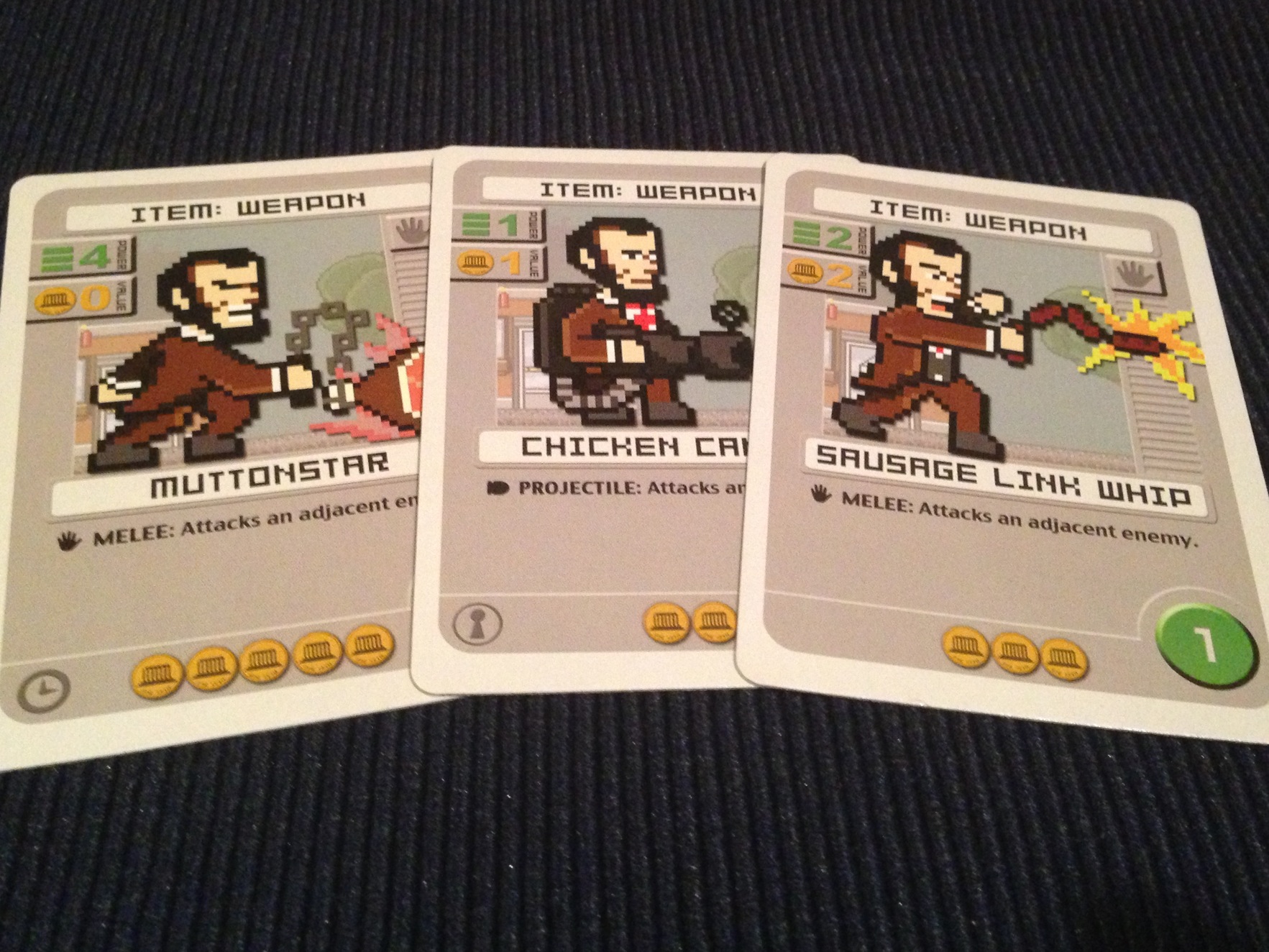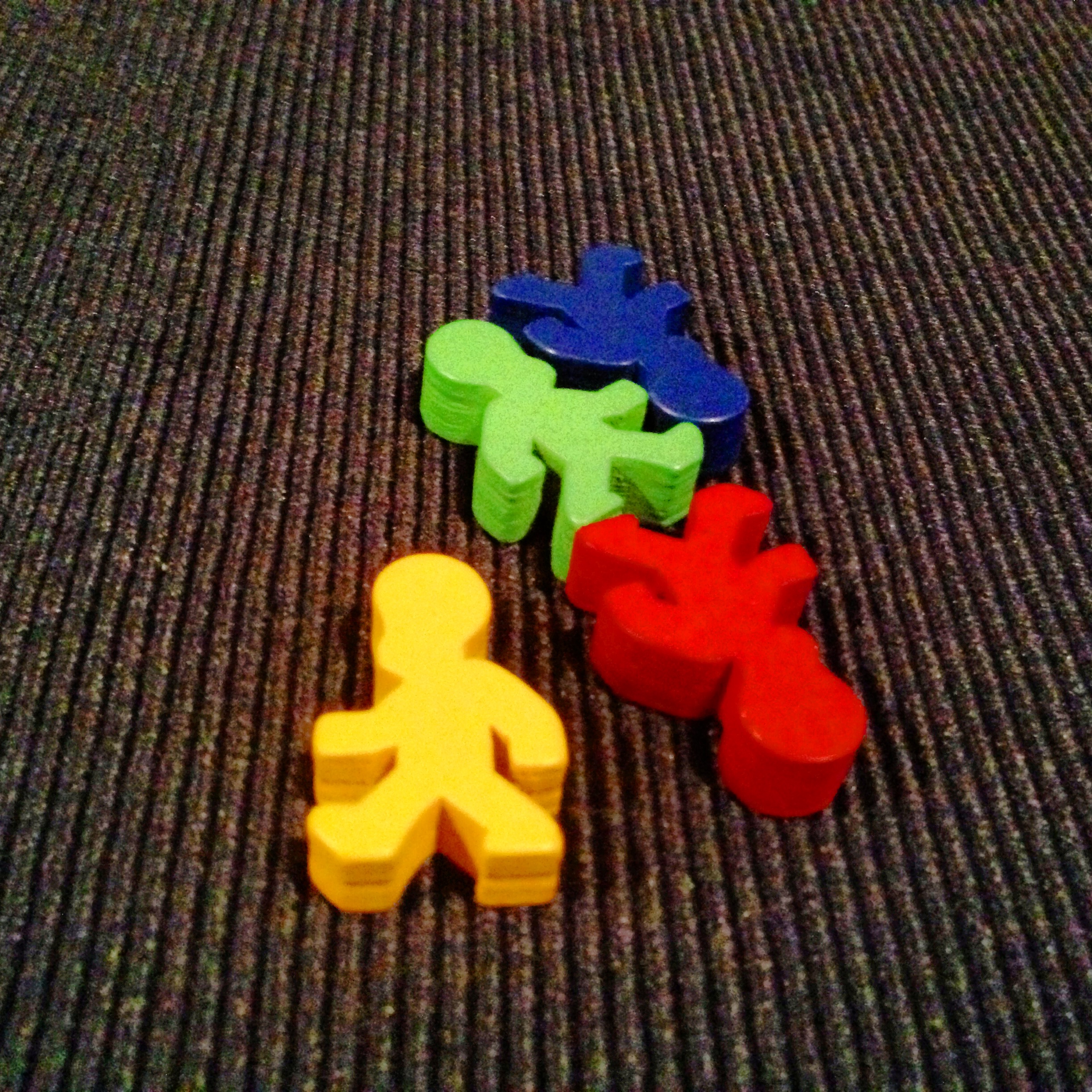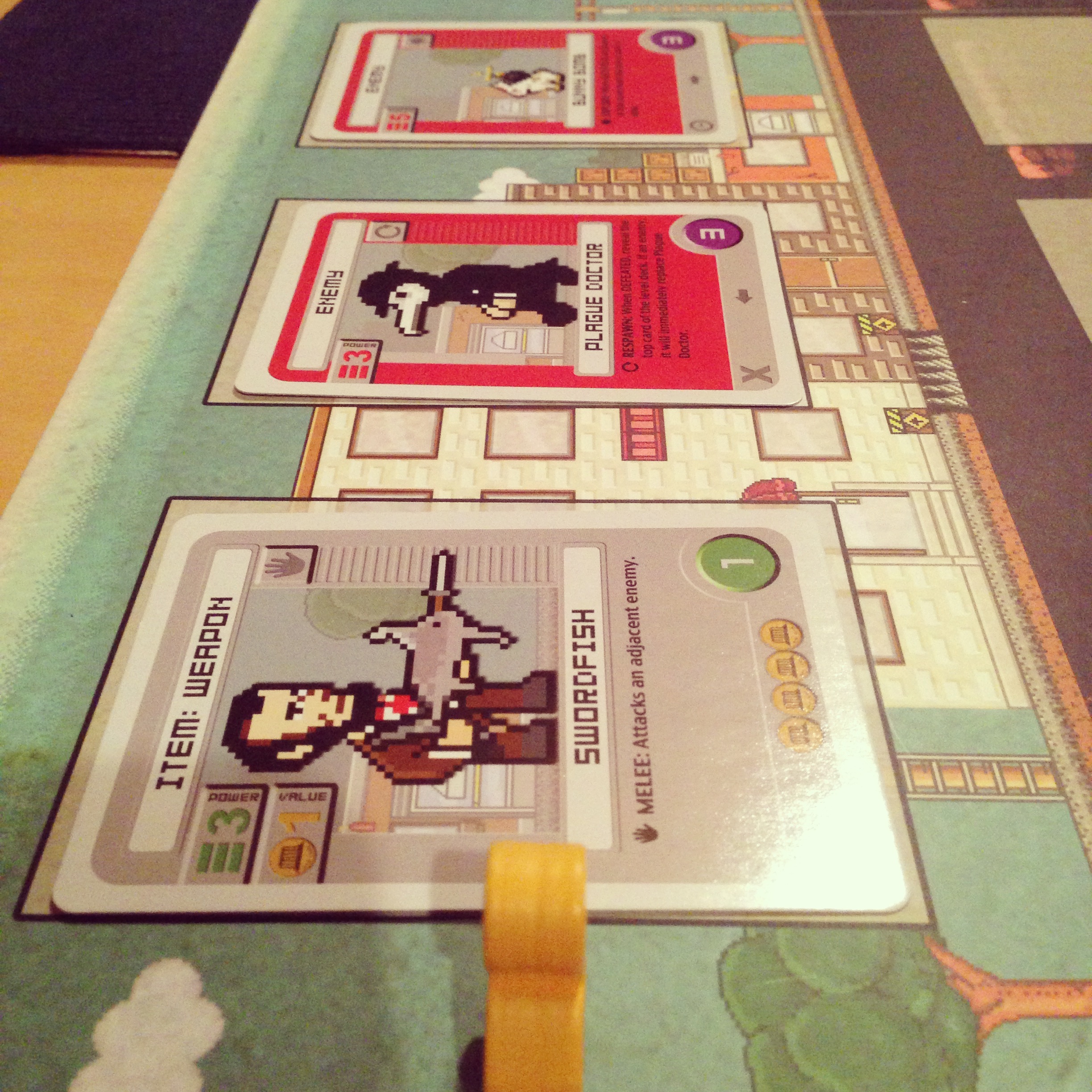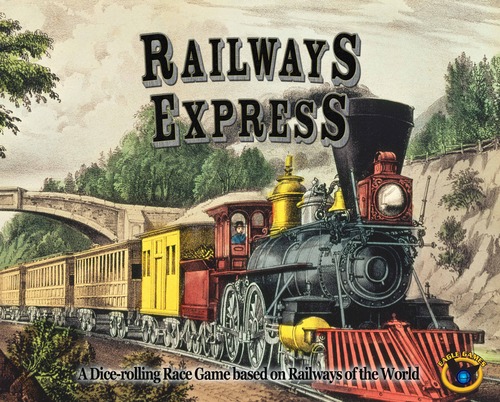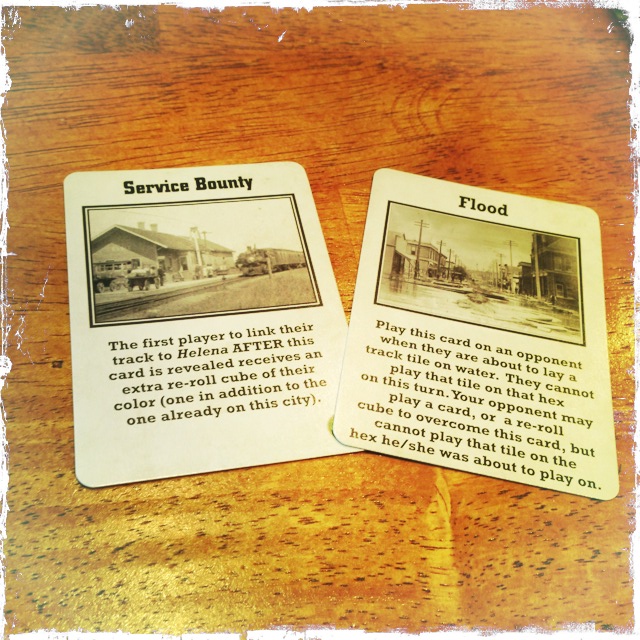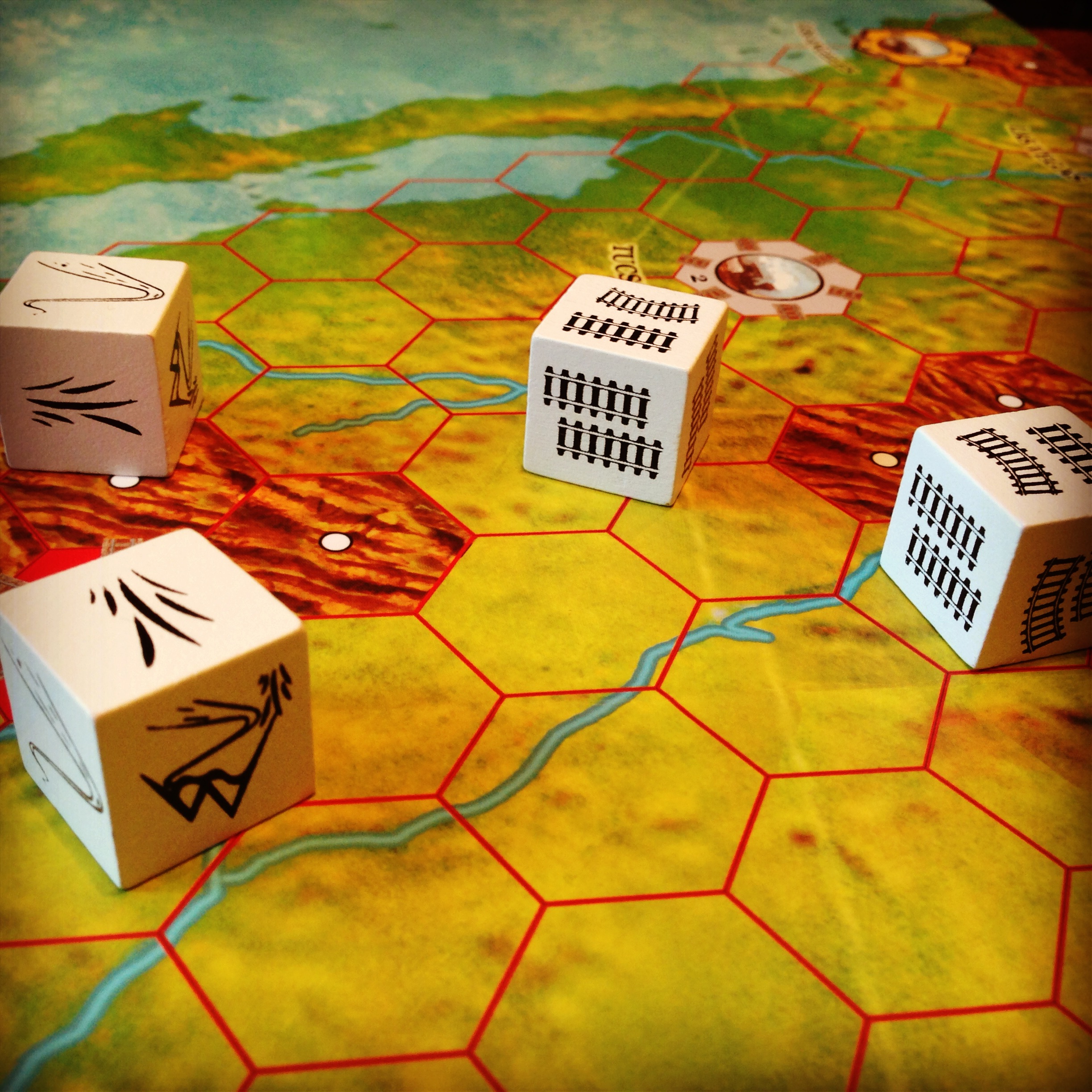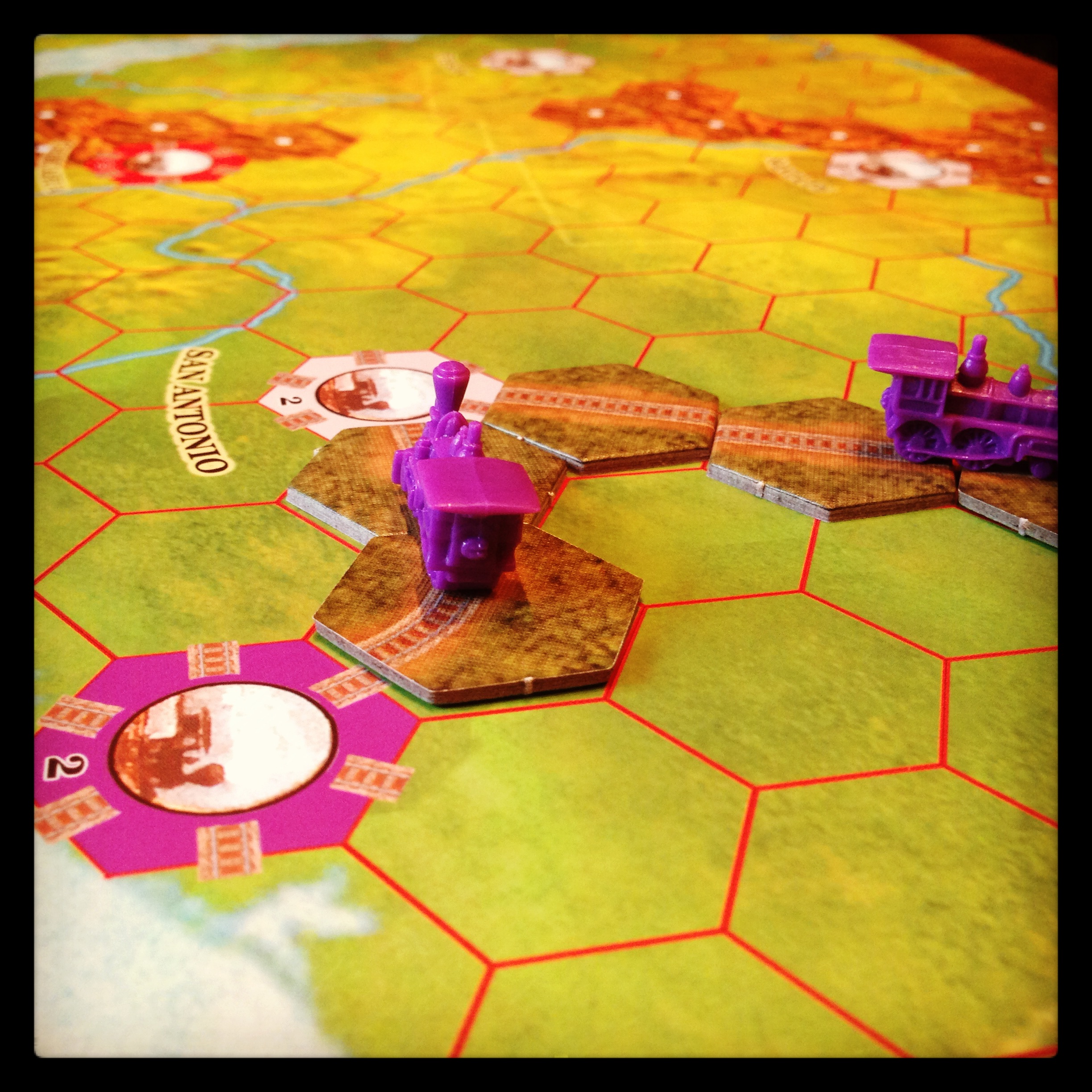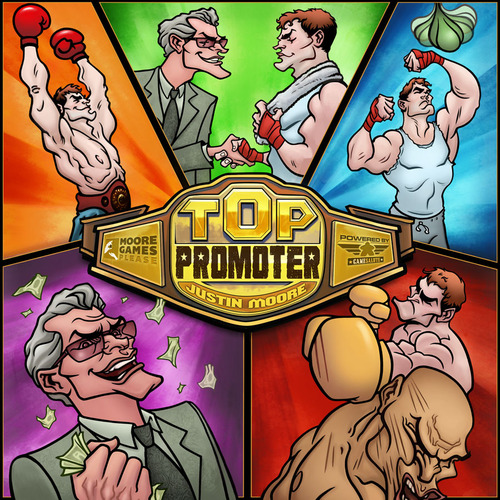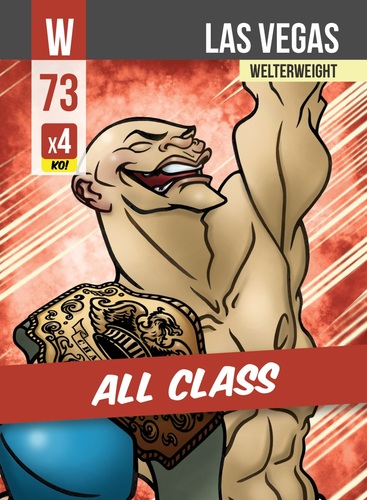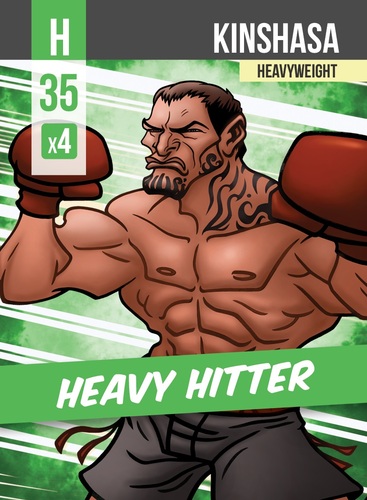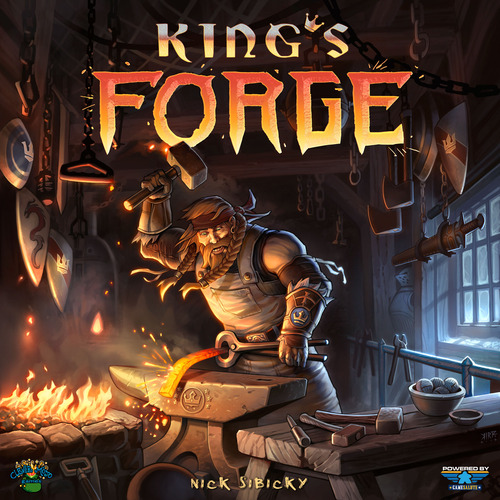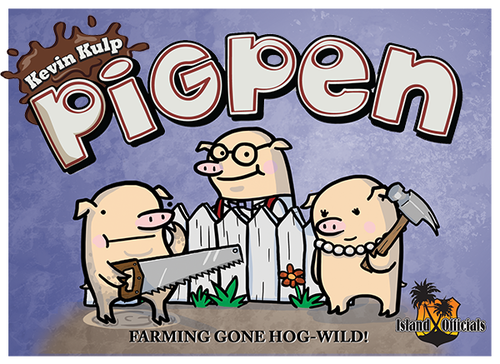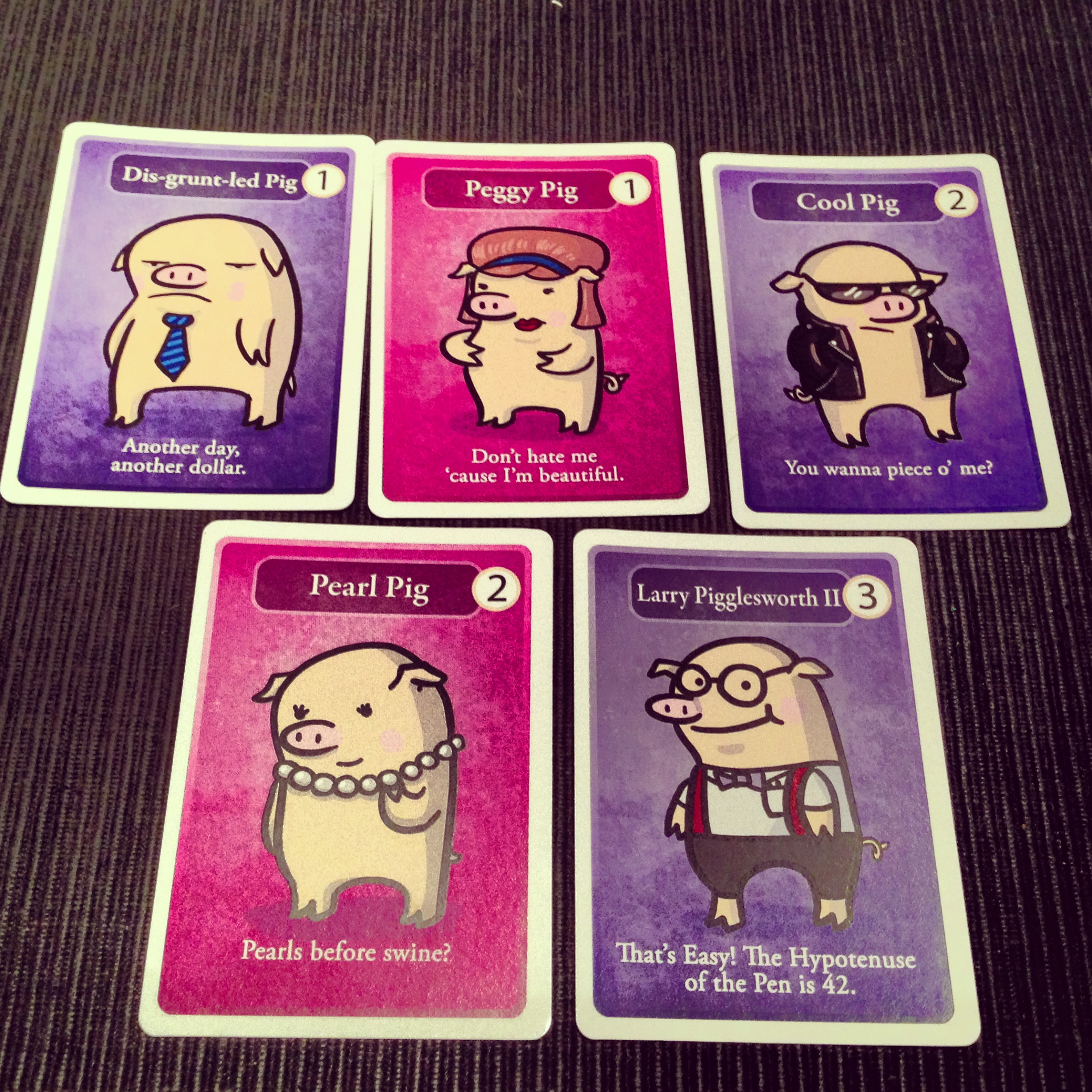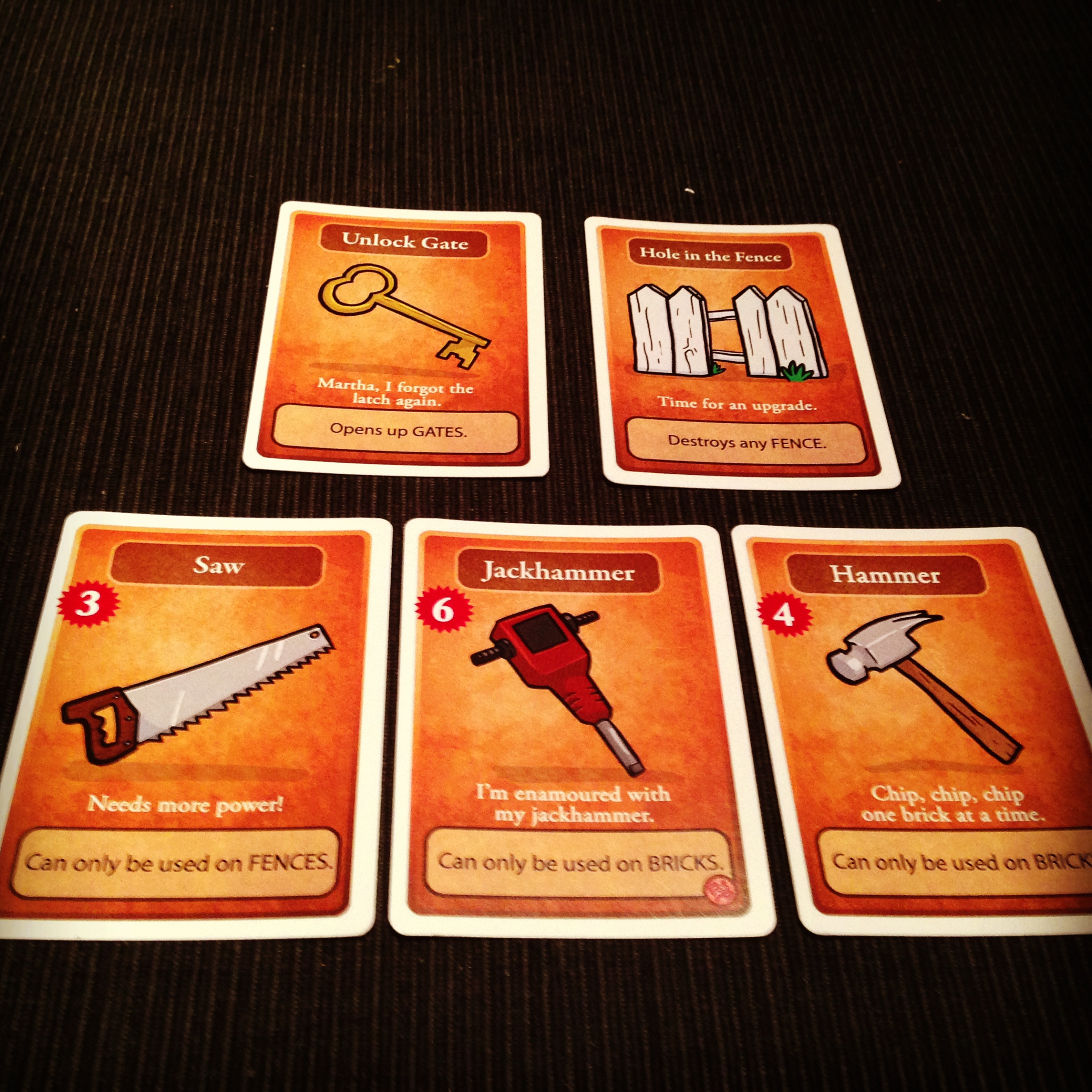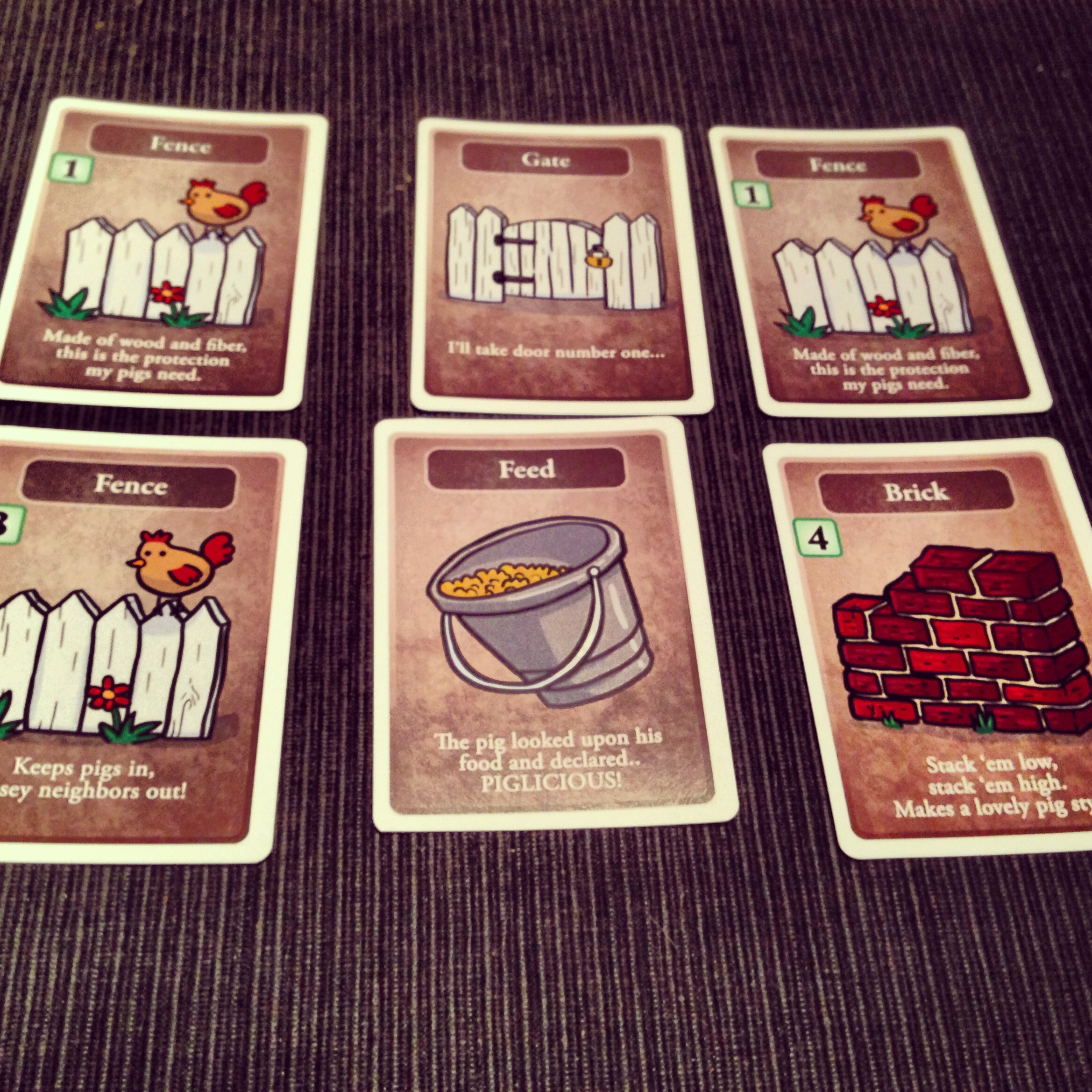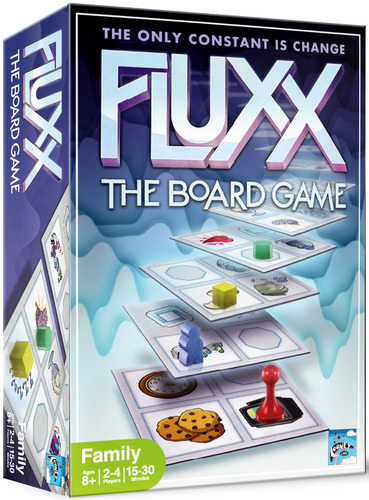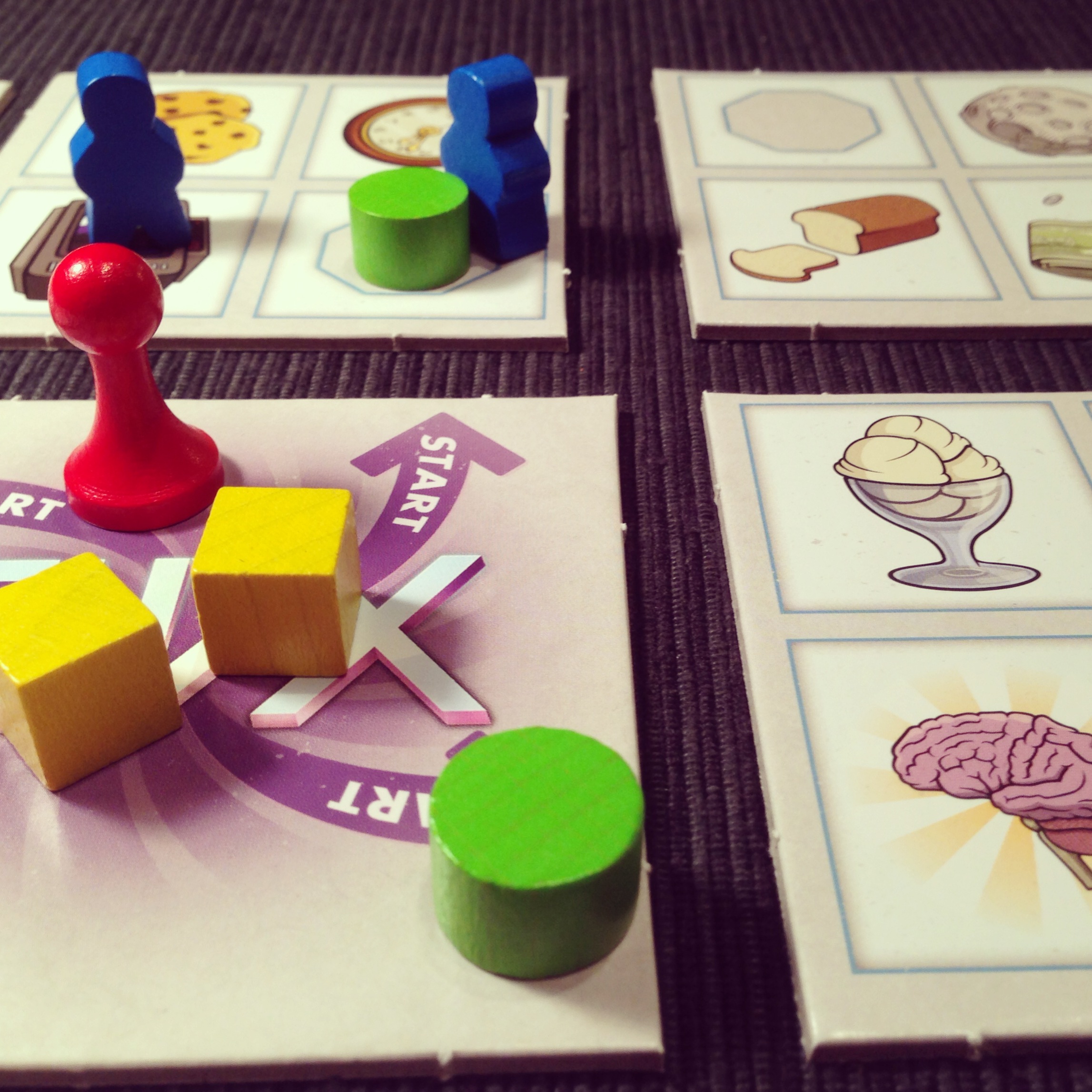Boss Monster—A Double-Take Review
/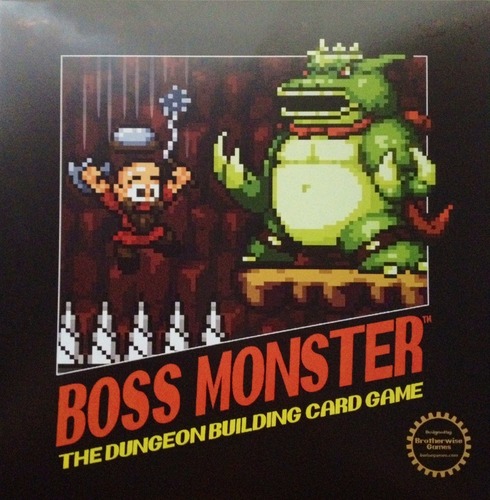 Yes, no, maybe... I don't know. Can you repeat the question?You're not the boss of me now, and you're not so big!
Yes, no, maybe... I don't know. Can you repeat the question?You're not the boss of me now, and you're not so big!
- They Might Be Giants
Last year saw the onset of one of the biggest crazes to hit board games: card games that look like video games from 25 years ago.
Today we're taking a look at one of the most successfully crowd-funded games in this genre—Boss Monster: The Dungeon-Building Game.
Do you have what it takes to build the best, baddest, and most enticing dungeon, in order to destroy the hapless heroes that may wander in looking to loot your treasure? Let's take a look!
The Overview
You are a Boss Monster, and you're building your dungeon room by room. You know those jerky heroes from the town will come for the loot, so you have to build a dungeon that can take them down—or they'll take you down.
The Components
Cards...lots and lots of cards. There are several different types:
- Boss Cards—These indicate which character you will be for the game.
- Hero Cards—There are two types of Hero Cards, the regular type and the epic type (which sport a gold back). These are your enemies, and killing them off is ultimately how you score points to win the game.
- Room Cards—This is the most plentiful type of card, and there are a few different types of Rooms, including trap Rooms, and monster Rooms. And there are basic and advanced Rooms in each type.
- Spell Cards—Spells are a little hard to get into your hand, but they act as a one-time event or interrupt card that can be played during either the Build Phase, or the Adventure Phase, but now we're getting ahead of ourselves.
Setup the Hero Deck by including the proper heroes depending on the number of players (each hero has a number of icons denoting the minimum amount of players in the game for that card to be used in). Each player is then randomly dealt a Boss Card, which will give them an identity, as well as an XP value that will help when determining who goes first. It will also give them a one-time level-up ability. Each player then draws five Room Cards and two Spell Cards, and chooses two among all of those to discard. They then build their first Room by placing a Room of their choice to the left of their Boss Card. Then you're ready to go!
The Gameplay
The game plays in a series of rounds rather than player turns. Here is a brief summary of how this looks:
Beginning Phase—Heroes are revealed from the Hero Deck (one for each player in the game). These Heroes will have a heart symbol with a number in it, indicating how many hit points they can withstand, and a treasure icon, which is the type of treasure they've come looking for.
Build Phase—Each player can build one Room in his or her dungeon (building right to left from their Boss Card). Advanced Rooms can only be built onto an existing standard Room with the same treasure icon.
Bait Phase—Each dungeon will be inspected for the number and type of treasure types and compared with the Heroes in town, and whoever has the most of one type will lure each Hero of the matching type to the entrance of their dungeon. If there is a tie, then no one will lure the Hero, and likewise, if there is no treasure in any of the dungeons, then the Hero stays in town.
Adventure Phase—The Heroes who are brave enough to venture into the dungeon seeking plunder go through each Room from left to right until they are either killed or reach the Boss. Room cards have a black heart icon with a number that indicates the amount of damage it inflicts on the hero. If the hero is killed, it's turned over revealing either one or two gold coins, depending on the level of the Hero (these are the VP's, referred to as souls; Epic Heroes apparently have two souls). If the Hero makes it through without dying, it's placed under the Boss Card leaving the one or two blood spots exposed, which represent a wound to your Boss.
End of Turn—Check to see if someone won. If a player receives 5 wounds, that player is out of the game; if a player at any time gains 10 souls/points, he or she is declared the winner. If not, go to Beginning Phase.
Jeremiah—The thing I keep coming back to on this game is that it's very unique. And I mean that as a compliment. Boss Monster is exactly what it says it is: it's a game about building a dungeon, and being the best bad guy at the table. The components are simple: It's cards. But the graphic design is genius; it strikes that sentimental/nostalgic/novelty button just right.
Firestone—I agree. The theme is unique and fun and completely integrated. There are a couple of other games that are similar (Dungeon Lords, for instance), but this is of filler weight and length, so doesn't feel at all like it's ripping off. I really do like the pixelly, retro art. It's nostalgic, but man, there are a LOT of games out now that are putting all of their gameplay eggs into the nostalgic, 8-bit basket.
Jeremiah—Yeah, it's a "thing" right now. Just like after Dominion was a huge success we saw a ton of deck-builders, now that a few Kickstarters have gone bonkers with the retro look, many others are following suit.
Back to my statement about this game being unique: Unlike so many games that are hitting the market, it's really hard to slot this into any genre, in terms of gameplay mechanics. It's not deck-building, or set-collection, or resource-management. It's dungeon-building and killing heroes with some hand management; it's also fun.
Firestone—I completely disagree on the fun. But then...I hate fun, right? ;) This is the sort of game that's truly "dripping with theme," but unfortunately they spent all of their effort on theme, and little on the gameplay. I found it boring and repetitive, and I never felt that I had much control or meaningful decisions to make.
I built my dungeon, but whether it was enticing to a Hero was entirely dependent on which Heroes came out from that random deck of cards. If you built a Magic-heavy dungeon and a Magic Hero came out, good for you! If a Thief came out...tough noogies. Sure you could spread out the type of treasure, but that just meant that anyone who specialized even a little would beat you. And since you can only have five rooms in your dungeon, you have to commit and then hope for the best. Blech.
 Jeremiah—Well if I'm recalling properly, I'm pretty sure there is an even number of the different types of Heroes in the deck—with the exception of the fool and a couple other specials—which means as you go through the deck if you are specializing, each dungeon is going to have a shot at enticing the same amount if Heroes into it. Sure you're going to have to decide whether to compete with your opponents or try to diversify and snag one or two of each type. And sometimes you just have to play the cards you're dealt... That's why it's a card game. ;)
Jeremiah—Well if I'm recalling properly, I'm pretty sure there is an even number of the different types of Heroes in the deck—with the exception of the fool and a couple other specials—which means as you go through the deck if you are specializing, each dungeon is going to have a shot at enticing the same amount if Heroes into it. Sure you're going to have to decide whether to compete with your opponents or try to diversify and snag one or two of each type. And sometimes you just have to play the cards you're dealt... That's why it's a card game. ;)
Firestone—Look, I know 8-bit games, and practically every boss monster I ever fought...FOUGHT BACK! But if a Hero gets to my Boss Monster he just rolls over and takes a hit? Wha?! Most of this game is thematically rich, but that just detracts from the theme. Why even have different Boss Monsters if all they really are is a card to track hits? Oh, right...one-time-use level-up powers. Zzzz... And don't get me started on the different XP for the Bosses. "Wait...XP breaks ties, and we're randomly dealt these Boss Cards?"
Jeremiah—Well, yeah, the Boss takes ONE hit, and then devours or beats to a bloody pulp or whatevers the Hero; it takes 5 heroes to take down the boss; I'm totally okay with that.
It's a short game and the level-ups being a once-a-game bonus is sometimes just enough to get you back in the thick of it! XP breaks ties, and higher XP means a little weaker power for your level-up ability; it seems to balance out pretty well to me. If you get a higher XP Boss then you get an initial advantage, but it evens out when you level up. I was totally fine with that.
Firestone—I understand that the enjoyment of these sort of games is highly dependent on the group. But most of the people I game with don't like "experience" games, or theme-only games (which is why I LIKE gaming with them), and this game went over like a lead balloon.
My oldest liked the theme, and thought the gameplay was kinda fun. But after the second game even he was acting visibly bored.
I know the guys at Brotherwise made a TON of money on this Kickstarter campaign, so good for them. Honestly. But for me, this is just thematically rich, and gameplay poor.
Jeremiah—The only reason I would hesitate to play this with anyone and everyone is that there are a few cards that are just a shade past family friendly because of their title/concept, such as the Succubus Spa, and the Vampire Bordello. There's nothing gratuitous on them, unless extremely pixelated babes are your thing... Thematically they make sense, but I would suggest pulling those cards out before playing with the kiddos.
Firestone—I don't begrudge them adding these cards, since they fit thematically. But yeah...I certainly pulled them out when I was playing with my 9-year-old...
Jeremiah Final Thoughts—I have yet to play this game just once—it plays fast, and it leaves you wanting another go 'round. Boss Monster is fun, thematic, and unique; I recommend you put this one on the table!
Firestone Final Thoughts—It works for kids. It might work as an occasional filler. And there are certain gaming groups that will eat this up. But as for me and my game group, we'll be keeping this one off the table.
Theology Of Games would like to thank Brotherwise Games for providing review copies of Boss Monster. This in no way affected our opinion of the game.
Thanks for reading! Have you played Boss Monster? Which one of us do you agree with? Let us know in the comments!

